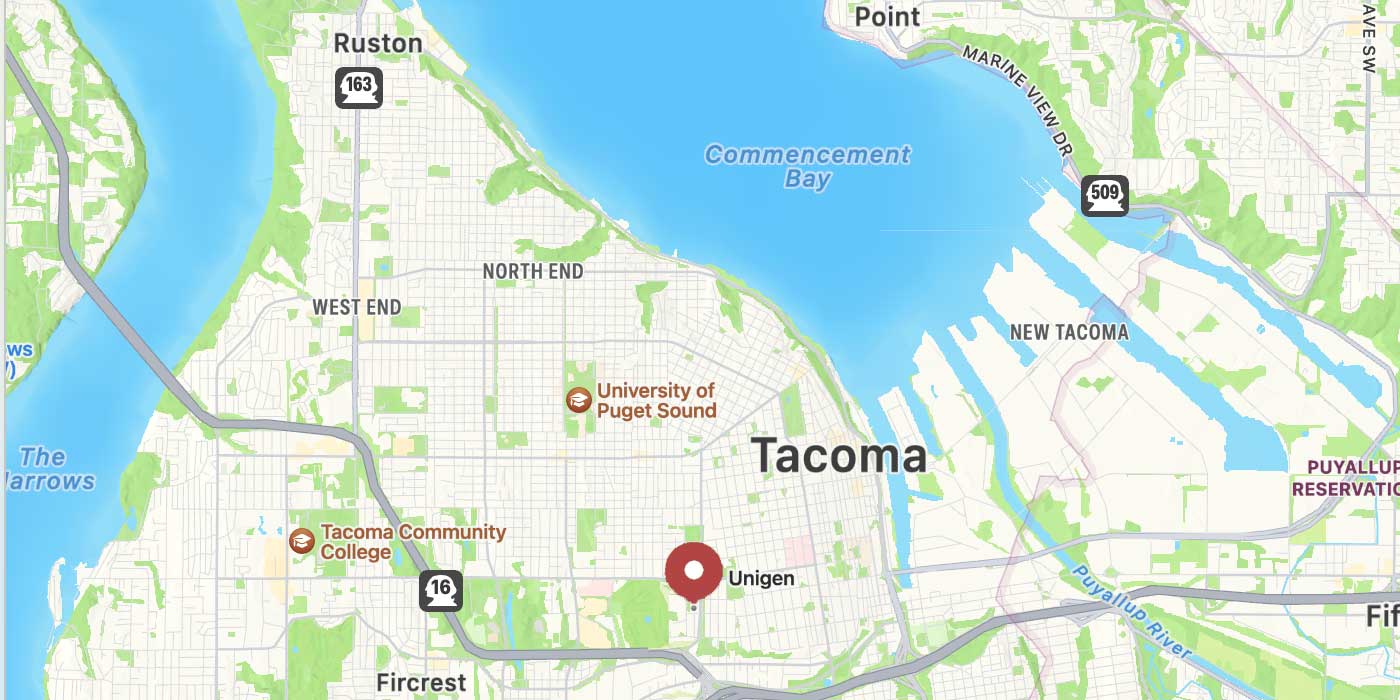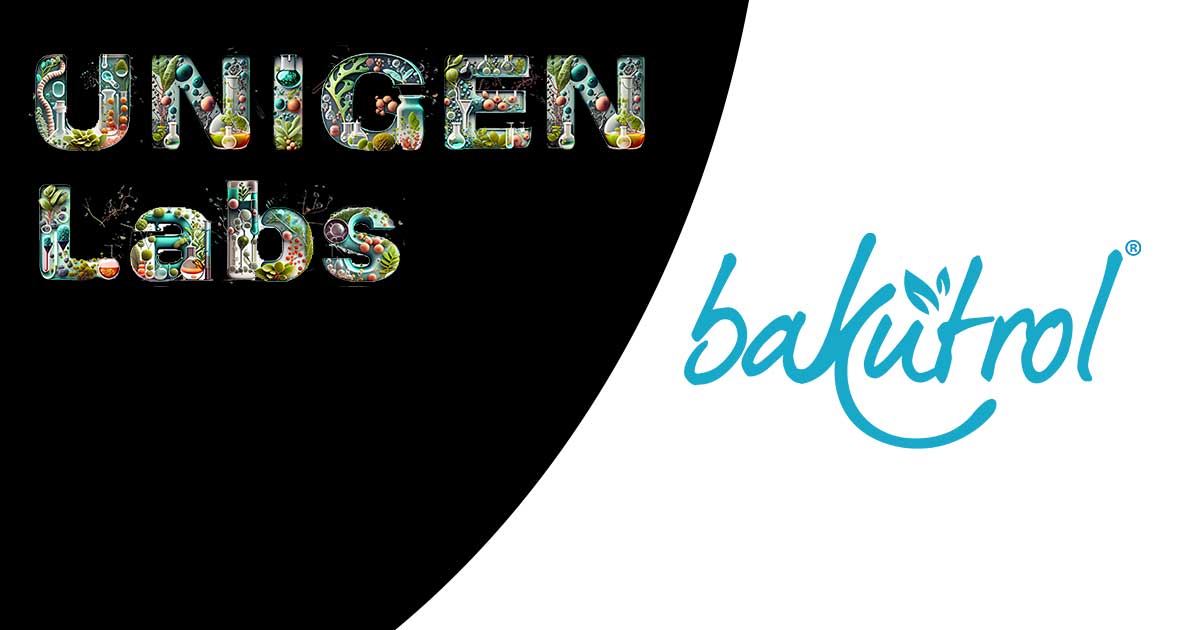By Dr. Qi Jia, Ph.D.
Chief Scientific Officer, Unigen, Inc.
INTRODUCTION
There are many Bakuchiol products on the market today, both natural and synthetic, making it confusing to identify quality from misconceptions and simple name-drop branding.
Unigen’s Bakutrol® is the most clinically studied Bakuchiol ingredient, with peer-reviewed publications, safety data and issued global patents. Bakutrol® is economically made from a proprietary, patented process with solid stability and easy formulation. Bakutrol’s quality is guaranteed by HPLC quantification, ensuring Bakuchiol purity and phototoxin volume to avoid batch to batch variation.
UNIGEN’S BAKUTROL®
Bakutrol® is a clinically proven, novel cosmetic ingredient, discovered and developed by Unigen.
- Trademarked; multiple global patents
- 5 clinical studies; peer-review published
- Triple function as a broad-spectrum antimicrobial, potent antioxidant and anti-inflammatory agent
- Safely and effectively manages post inflammatory hyperpigmentation and controls acne distressed skin condition
- Bakutrol® is produced with a patented production process by removal of all phytotoxins existing in the plant seeds, enriching the bioactive compound – Bakuchiol – to not less than 60%
- Bakutrol® has a unique INCI name as Hydrolyzed Psoralea Corylifolia extract
WHAT IS BAKUCHIOL?
Bakuchiol is a meroterpene phenol stored in the seeds of Psoralea Corylifolia plant. The unique structure of Bakuchiol contributes to its anti-microbial property, especially against Gram positive microbial associated with acne distressed skin. Bakuchiol also possesses strong free radical absorption capacity especially against super oxide anion and also modulates cyclooxygenase and lipoxygenase pathways for attenuated proinflammatory mediators.
UNDERSTANDING THE DIFFERENCE: Natural vs. Synthetic Bakuchiol
Bakuchiol structure contains one chiral center that is specifically characterized as (+)S-Bakuchiol. Synthetic method cannot selectively or economically make (+)S-Bakuchiol without its stereoisomer (-)R- Bakuchiol. Be sure to ask which stereo isomer of Bakuchiol the synthetic material contains since the synthetic (-)R- Bakuchiol does not possess the same biological function as that of natural (+)S-Bakuchiol from natural source.
MISCONCEPTION: The higher the purity, the better Bakuchiol is.
It is not true that the best Bakuchiol must be >99% purity. It depends on how much prototoxin the material contains since natural Bakuchiol coexists with phytotoxins in the seeds of Psoralea Corylifolia. Even >99% Bakuchiol may contain 0.1% phototoxin, that is 1,000 ppm. The usage of this material at 0.5% concentration in a cosmetic formula will introduce 5 ppm phytotoxins in the product. European regulation requires the content of prototoxin in any cosmetic product has to be less than 1 ppm. Ask your Bakuchiol supplier about their phototoxin testing method, limit of phototoxins in their ingredient specification and batch to batch limit of phytotoxins in their Bakuchiol material.
In Unigen’s opinion, any Bakuchiol based natural ingredient shall contain not more than 100 ppm phototoxins quantified by HPLC method in ingredient specification to be tested in every batch.
BAKUTROL® IS A STABLE INGREDIENT
Unigen has solid confidence in Bakutrol® stability derived from its proprietary manufacturing process. Bakutrol® is made by hydrolyzation of crude seed extract under strong basic condition and high temperature in order to degrade all phototoxins.
Bakutrol® has stability data from 25oC/ 60% relative humidity and accelerated condition at 45oC & 75% relative humidity condition to prove the shelf life of the ingredient. Unigen provides Bakutrol® samples and recommendations to formulation scientists to make it best fit the needs from each application.
BACKED BY CLINICAL TRIALS
Unigen carried on two clinical trials in USA and China. The trials were run by dermatologists in university and hospital settings. Subject photos were taken and dermatologist assessments to evaluate the clinical benefits for the subjects with acne distressed skins. The clinical studies have been published in peer-reviewed dermatological journals and presented at professional conferences. One clinical trial was carried on as randomized, double blended, vehicle and positive controlled clinical studies. DOI: 10.36849/JDD.5655
Three more clinical trials were also conducted focused on a unique skin benefit from Bakutrol® for the reduction of post inflammatory hyperpigmentation. It was an unexpected finding by the dermatologist in the first open label trial and confirmed in a vehicle controlled clinical study. Those clinical studies yield two peer-reviewed publications and one poster presentation at a professional dermatological conference. DOI: 10.3390/ijms21155341, PMCID: PMC6334832, DOI: 10.1007/s00403-020-02071-4
SOLID SAFETY DATA
Bakutrol® was tested for AMES and Epiocular assays to prove this ingredient was not associated with mutagenic toxicity and ocular irritation. Bakutrol® formula was tested on health volunteers by scratching compromised skin, for potential skin irritation and skin allergy after repetitive patch applications, and for potential phototoxicity by application of Bakutrol® formula to the skin followed by UV irradiation. No skin irritation or sensitivity has ever been documented for Bakutrol®.
GLOBAL PATENTS
Bakutrol® invention for making the Hydrolyzed Psoralea Corylifolia extract was filed on May 9, 2005. Bakutrol® has 8 issued patents in USA, China, Japan, South Korea, and Brazil. Bakutrol® invention for Post Inflammatory Hyperpigmentation (PIH) was filed February 2, 2011 with 9 issued patents in USA, China, Hong Kong, South Korea, Australia, Mexico, and Canada.



